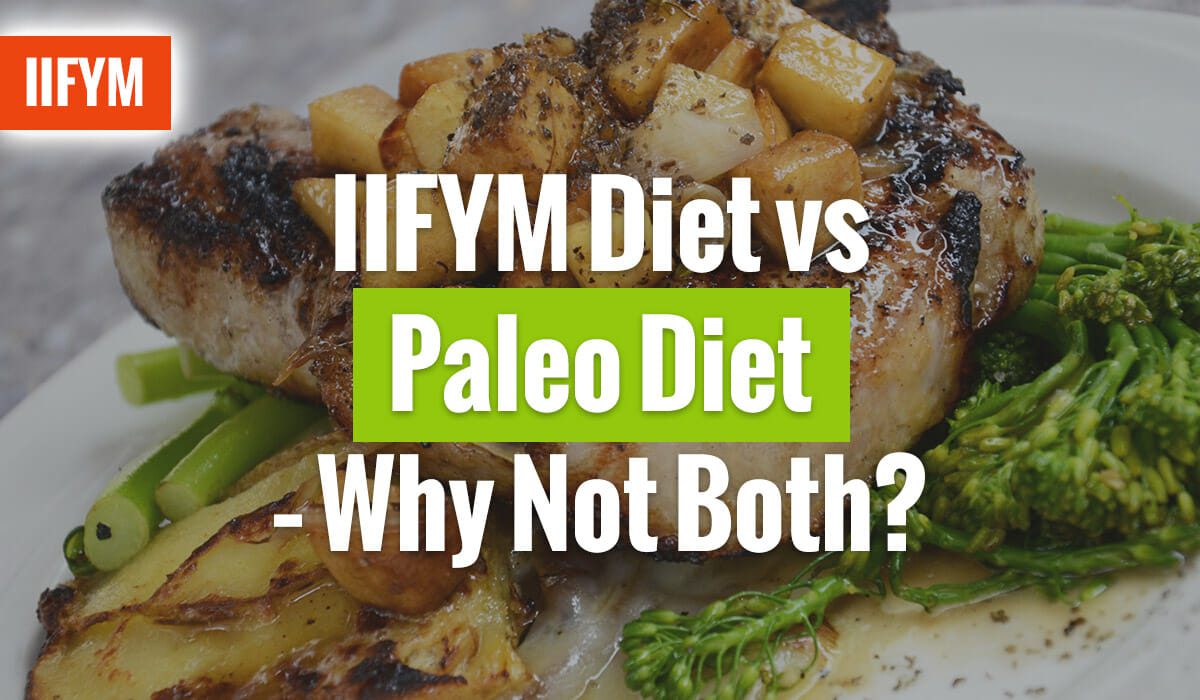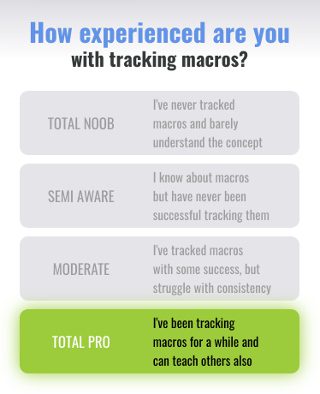If you’re in the health and fitness industry, chances are, you’ve heard of the Paleo diet before. If not Paleo diet, perhaps the ‘Caveman’ diet rings a bell.
Call it what you want, this is currently one of the hottest diets (fad diet?) of today’s times and is one that more and more people are jumping onto as they strive to burn fat, build their body, and improve their health.
Now like most things in life, there is good and bad to this diet set-up. Adamant followers of this approach may deny that as some tend to be rather cult-like in their beliefs, but when you take a step back and really look at the paleo diet plan, you will see a few shortcomings.
Fortunately, by mashing together two ‘diet worlds’, so to speak, you can overcome these shortcomings. More on that later.
For now, let’s first define paleo, for those of you who don’t know (and who pretty much are living under a rock…).
(Side Note: Macronutrients are crucial, to find out a macro split that works for you; click here on our Macro Calculator.
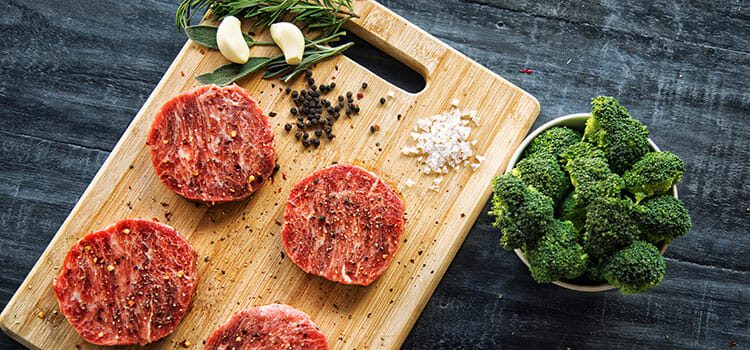
Paleo Diet Defined
If you were to ask a handful of people on the street what the ‘paleo’ diet was, assuming they were involved in the fitness scene, you’d probably get a good variety of answers.
“Living off the land,” might be one statement you’d hear.
“Low carb, high-fat eating,” might be another.
“If you can’t catch it – you can’t eat it!” would be another way to describe this approach.
The Paleolithic diet (Paleo diet for short), was developed based on the notion that in very early times, people weren’t riddled with the diseases that they are today.
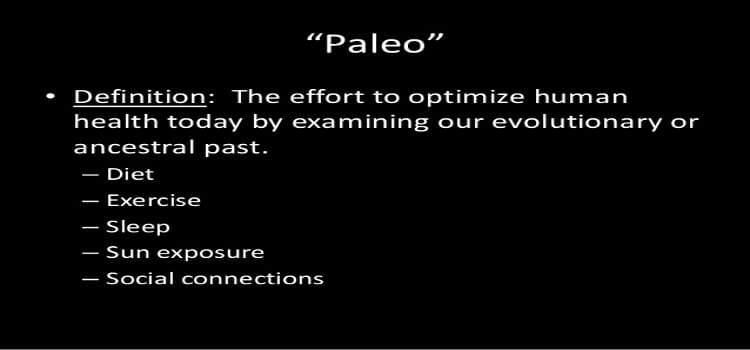
Back in the ‘caveman era’ (which is how that term for the approach came to be), you didn’t see the rates of heart disease, diabetes, and of the like that you do today (getting eaten by a lion was the far bigger concern to staying alive).
Obesity rates are rising, people are dying every day from cancer, heart disease, and stroke, and diabetes almost seems like the ‘in’ condition to have as everyone else has it (make no mistake, however, it is NOT cool…).
Today, however, with modern day eating habits and all the manufacturing that we are doing to our foods, these diseases run rampant.
Which brings us back to the diet. If our ancestors were healthier than we are today, what is that telling us?
Thus the diet was born. The concept is that if we revert back to how people ate in ancient times before today’s food products were introduced, we can slow down the disease rates that we are experiencing and lead healthier lives.
Paleo Diet Food List for Beginners
What does this mean? What foods can you eat on the paleo plan?
As noted above, ‘eating from the land’ is a good way to summarize what is and isn’t permitted. If the food doesn’t come straight from the land (or wild), it’s not to be put into your body.
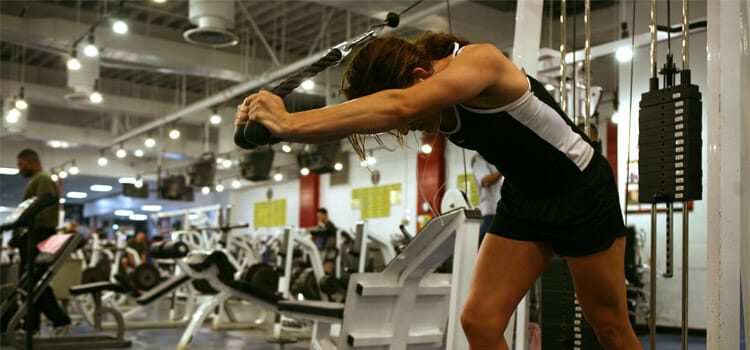
The paleo diet approach is going to emphasize the following foods:
• Grass-fed meats
• Wild caught fish/seafood
• Fresh fruits (not canned, dried, or juiced fruits)
• Fresh vegetables (except nightshade vegetables, which includes tomatoes, peppers, and eggplant)
• Free range eggs
• Small amounts of nuts and seeds
• Healthy oils (including olive, walnut, flaxseed, macadamia, avocado, and coconut oil)
Form your meals from these foods and you’re virtually set, or so claims followers of this approach.
The foods that you can’t eat?
As you might imagine, the list is quite long. Foods that are not permitted by this plan include:
• Grains/cereals
• Legumes/lentils
• Dairy (with the exception of grass-fed butter)
• Anything that contains refined sugar/processed flour
• Potatoes/Yams
• Squash (as they are too starchy to be considered a true vegetable in the paleo sense)
• Foods that are high in sodium content (beef jerky, pickles, canned foods, etc.)
• Any sort of processed snack foods
• Refined foods of any variety
• Most condiments/sauces (as they will contain added sugar/unwanted ingredients)
• Anything containing artificial sweeteners (diet soda, puddings, gum, etc.)
• Fatty processed meats (hot dogs, deli meat, pepperoni)
• Alcohol (small amounts of wine are permitted, however)
Whew. It might seem like there’s not much you can eat while on this approach. But rest assured, once you start on it, you’ll find that there are a number of great recipes that you can prepare using only foods from the allowed list.
Still not certain? One quick search on Google will give you more options than you know what to do with.
So not finding foods to eat is not a problem associated with this plan. As long as you are willing to adjust your taste preferences slightly (no pizza allowed!), you shouldn’t have a problem with this diet plan.
Now, this refers to the strict paleo approach. For some people, they just aren’t able to do that. It’s not until they’ve dealt with too much food restriction and they want more flexibility.
Enter the normal paleo plan. This plan is a little looser and is followed by many in the paleo community.
It follows all the same rules and regulations as what’s noted above, however, users are also permitted to include:
• Ghee
• Potatoes
• Nightshade vegetables
• Raw honey
• Maple syrup
• 70% or higher dark chocolate
This version gives you a few more options (and is rejoiced by every chocoholic!).
Still not enough? If that doesn’t work for you, you might try primal eating, which is the most flexible of the paleo diet approaches out there.
This approach allows what you’ll find in the normal everyday paleo diet plan but also allows you to consume a few more alcoholic beverages (whiskey, brandy, scotch, tequila, cognac), white potatoes, fermented dairy products (yogurt, aged cheese, and raw milk), as well as white rice on an occasional basis.
Heck, you can even find paleo friendly brownies, ice cream, and chicken wings if that’s what you desire.
This plan can take the normal low carb strict paleo diet plan and make it a much more moderate approach depending on how you structure your meals. For those who are training hard, this is often the approach employed as it simply allows them to better keep up with their workout sessions.
How do all of these plans stack up? While the strict paleo diet approach will probably end up being somewhere around 50% fat, 30-40% protein, and 10-20% carbs, the normal paleo diet plan will likely add a few more carbs.
Most people will come in around a 40/40/20 split (fat, protein, carbs) with that plan while if they choose to go the primal route, it may be closer to a 40/30/30 split depending on their individual food preferences. While these numbers are not set in stone, it can give you a general idea of how these plans normally shake out.
Okay, now that you know what the paleo diet approach is, why do it?
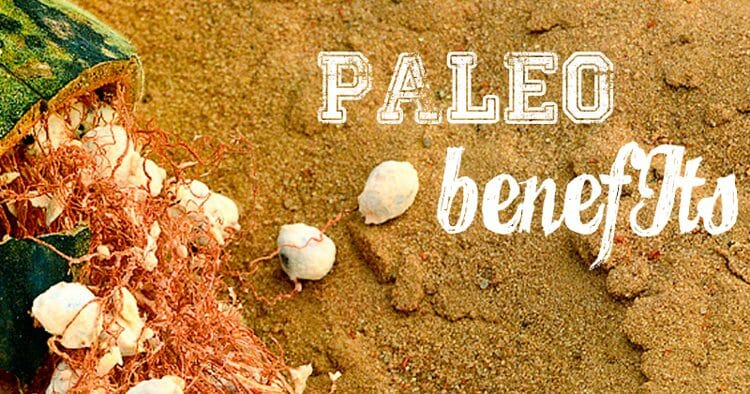
Benefits of Paleo Diet
There are many stated benefits to going paleo. And, rest assured, many of these benefits are both proven and demonstrated in everyday situations.
Millions of people have made the switch over to the paleo diet and have stuck with it over the years, so clearly there is something to this approach.
Here’s what it has to offer you.
• Improved Blood Glucose Control
Thanks to the fact that sugar (and all refined foods for that matter) are completely restricted by this plan, that means that you’ll experience greatly improved blood glucose levels.
All the foods allowed on the strict paleo diet plan (with the exception of fruit and honey) are ranked very low on the GI index, meaning they will release their energy into the bloodstream at a slow pace.
While some fruits do have a slightly higher GI (still not as high as many processed foods, however), these fruits also offer a very strong dose of fiber as well, which helps offset any blood glucose spikes you may experience.
By eating the paleo diet plan, you’ll avoid blood sugar spikes followed by crashes, which is what leads to those energy slumps throughout the day.
If you often find yourself nodding off for a nap around 2 pm (or dreaming you were allowed to do so at your desk!), you can usually thank a plummeting blood glucose level for this.
With greater blood glucose control also comes a lower risk of fat gain, provided calories are at a proper level. When your blood sugar is high and insulin is released by the pancreas in large doses to deal with this blood sugar spike, this puts your body in position to begin storing body fat rapidly.
• Lower Risk For Diabetes
Which brings us to our next benefit – lower risk for diabetes. When you keep your blood glucose levels stabilized, you won’t be putting as much stress on the pancreas to keep producing insulin to help manage blood sugar highs and crashes.
Over time, if you keep experiencing these fluctuations and insulin is being released, your tissue cells can actually start to become resistant to that insulin, leading to insulin resistance.
This is one only a small step away from developing diabetes.
The paleo diet is one of the best diets you can consider if you are looking to either manage diabetes you currently have or side-step diabetes entirely.
• Stabilized Energy Levels
The next big benefit users of the paleo diet approach proclaim is stabilized energy levels. This is thanks to two different reasons.
First, you have stabilized blood glucose. Again, without those blood sugar crashes, you won’t have the energy crashes that come with them.
Second, as much of your food and energy intake on the paleo diet approach comes from healthy fat sources, these fats will help supply you with ongoing energy throughout the day.
When comparing carbohydrates to dietary fats as an energy source, carbohydrates provide a more immediate increase in your energy level but then taper quicker as they are used for fuel (or stored as body fat if insulin is spiked).
If you’re not sure where to begin, click here to start an IIFYM Macro Blueprint where we set you up with a 100% customized Macro Plan!
In contrast, dietary fats break down more slowly, so you won’t get that immediate increase in energy like you would from carbohydrates, however, you will continue to experience ongoing energy as the fats do break down.
Essentially the energy you get from carbohydrates is more like a hill or mountain while the energy you get from fats is more like the prairies.
Do keep in mind that depending on the nature of carbs you choose, that energy graph could be like a shallow hill or like Mount Everest. Slower burning carbs (sweet potatoes, brown rice, oatmeal, etc.) will have a much shallower peak than processed carbs (like white bread, sugary cereals, etc.).
• Hunger Management
One massive reason that this diet speaks to those who are hoping to lose body fat is due to proponents of it explaining that it helps with satiation.
When on the paleo diet, hunger will be virtually non-existent, say some people.
Is this true?
Yes and no. The thing is, if you are on a true fat loss diet and eating in a hypo-calorie state (eating fewer calories than you burn off), there’s a good chance you will at some point or another in your diet, experience some hunger.
Your body is getting less energy than it would like. Something has to give. Hunger will come up from time to time.
But, with this plan, chances are, it’ll be more than tolerable.
This is thanks to the fact that the plan focuses primarily on dietary fats and protein, the two nutrients that help control hunger the best.
Carbohydrates, especially refined and processed carbohydrates (which are eliminated in this plan) are the foods that tend to spark hunger the most. As such, without them in this plan, you should find that you are able to maintain control far better.
For many people, carbs are like the spark to a bomb. As soon as it’s lit, hunger goes off and is very hard to control. If they focus on eating strictly fats and protein along with vegetables, hunger is incredibly low.
If that’s you, you’ll likely find this to be a big benefit of using this plan.

• Increased Nutritional Density
Because of the food choices called for on the paleo diet, you are going to, by nature, be taking in more nutrition than you likely would on the average North American diet of today’s times.
Most of our diets are filled with processed foods that have been stripped of their vitamins and minerals, and as such, don’t offer a whole lot of benefits to our body.
This cannot be said for the paleo diet. Done right, you’ll be feasting on a high volume of fresh fruits and vegetables, all of which are loaded with important nutrients for optimal function.
Combine this with the high-quality protein and fat sources found in this plan to supply vital minerals, fat-soluble vitamins, amino acids, and essential fatty acids that your body needs and you’re all set.
Most people on this plan will notice a sharp increase in their overall nutritional intake, which could result in a number of other added benefits on its own as well.
This could include improved energy, enhanced cognitive processes, improved mood, greater exercise performance, and an improved cholesterol profile to name just a few.
If your current diet has you suffering from a nutritional deficiency of any kind and upon going paleo, you remedy this deficiency, you can rest assured you are going to be seeing benefits.
• Reduced Inflammation
One key benefit of the paleo approach that draws those who are looking at it for the health benefits it provides is reduced inflammation. Chronic levels of inflammation are impacting so many people in today’s world and are leading to a number of unwanted conditions.
Heart disease, diabetes, Alzheimer’s diseases are just a few of the key conditions that can be better managed and prevented with a Paleolithic diet plan.
While inflammation in the short term is a good thing (and necessary to heal from infection or injury), it’s when inflammation starts to occur on a systemic level and becomes chronic that it gets dangerous.
The foods you eat on a daily basis are directly tied to levels of inflammation in the body, therefore you do have great control over this.
The paleo diet will provide foods that are strongest at reducing inflammation (omega-3 fatty acids found in fish along with fresh fruits and vegetables), so will work incredibly well to help combat these conditions.
• Improved Immune System Function
Finally, one last benefit to note about going paleo is you’ll also experience improved immune system function as well. Many people notice they recover better on a day to day basis, both after exercise as well as after a busy day.
As your immune system influences your overall well-being on an ongoing basis, the stronger it is, the stronger you will be.
When you aren’t providing sufficient nutrients to the body through your food intake, your immune system will suffer and this can lead to you feeling worn out come day’s end.
So there you have just a few of the key benefits that the paleo diet has to offer. Keep in mind this list is not inclusive and there are many other benefits that you may see upon starting depending on what your previous diet happened to be like and your overall state of health and well-being.
Seems pretty good, right?
After reading this, you might be tempted, if you aren’t already, to hop right onto the paleo diet and get started.
Not so fast…
As mentioned above, like everything in life, there is good and bad to this approach.
Drawbacks To Going Paleo
So what problems are associated with the paleo diet?
• Sustainability
The first big problem with going paleo is sustainability. In other words, how long can you last on this diet plan?
Now, earlier I spoke about how many different recipes you can find online that all are ‘paleo-friendly’.
And it’s quite true. There is no shortage of foods you can cook.
But, is that really going to be enough?
Think long and hard about this one.
When you are finding a diet to go on, whether you just want to lose weight or whether you want to improve some element of your health, you should always be thinking long-term.
Cut the short-term thought processes. You are changing yourself for good here.
Now, think about this one again. Can you sustain a paleo diet forever?
Can you truly never consume dairy again? Can you, for the remainder of your life, eat eggs and fruit for breakfast rather than digging into a bowl of comforting oatmeal?
Of course ‘never’ is a strong word. And even those who are very adamantly on their diets do ‘cheat’ from time to time. There’s nothing wrong with that.
But if you begin cheating more often than you are actually following the diet, well, you aren’t on the diet any longer.
Therefore, you aren’t actually paleo. So, if you are planning on going paleo and staying paleo, this means eating the foods on the list 90+% of the time.
So ask yourself, can you do this?
Many people simply can’t. Not for the long-haul anyway, which makes this plan not so sustainable.
The primal eating plan may fare better as more foods are allowed, but even still, if you plan to dine out in restaurants with friends and family and attend social gatherings, always sticking to the paleo diet may prove to be rather challenging.
• Calorie Control
The next whopper of a problem with the paleo diet is calorie control. Whether you choose to just claim ignorance or you just don’t know any better, even if you do eat foods that are strictly paleo, you may still not lose weight.
In fact, there’s a high likelihood that you will gain weight.
Why is this?
The fact is, the paleo diet, with its heavy focus on fat-rich foods, can be very calorie dense. If you feast on steak, eggs, nuts, and oils all day long, you can rest assured you’ll be taking in a high volume of calories.
Of course, you can go the other way too. You could eat primarily fresh fruits and vegetables all day long, missing out on the lean protein and healthy fat sources and take in too few calories as well.
On the paleo diet, there isn’t a lot of guidelines as to how much of each type of food to eat.
You just have to follow the eating guidelines and most claim things will just ‘fall into place’.
Only, for most people, they won’t just fall into place. At least not that easily.
Fat loss (or muscle gain) is a numbers game. No matter what foods you are eating, you have to consume the proper number of calories. There’s no magical combination of foods in the world that is going to get you out of this one, you simply must.
If you fail to do this, you won’t see results. It’s that simple.
So don’t be so fast to just assume by choosing paleo diet foods, it’ll all be okay. You must be looking at the serving sizes you are using and the types of foods you are eating.
It’s the only way to actually guarantee that you do see the fat loss or muscle building results that you desire.

• High-Intensity Exercise Performance
The next big problem of this diet is one that anyone who follows a very intense workout will typically find out sooner or later.
Low carb diets coupled with intense exercise sessions simply do not work.
End of story.
Remember, while your body can utilize both dietary fat as well as stored body fat as a fuel source when doing moderate intensity exercise, the same cannot be said for intense exercise.
You simply cannot break down this fat fast enough to supply energy to the working muscle tissues in time for when they need it. As such, exercise intensity decreases (or worse, stops entirely).
On a strict paleo diet, you won’t sustain an intense 4 or 5 day-a-week exercise program without a struggle. This is one big reason why modified versions of the paleo diet were created.
When you start adding some sweet potatoes and possibly some rice as well to the mix, you now have a feasible source of carbohydrates that you can fuel your workouts with.
As the paleo diet plan is very often utilized by those who are also taking part in Crossfit types of workouts (which is also focused on ‘going back to basics’ so to speak with your training), you’ll find these athletes very often moving to the primal style of eating to accommodate.
I wouldn’t recommend you try and find out the hard way that a strict paleo diet and intense workouts don’t lend well to each other. It’s quite an unpleasant feeling trying to get through a heavy lifting session on fewer than 50 grams of carbs per day.
You need carbs to exercise intensely. Accept that and make modifications to the diet accordingly.
• Lack of Calcium
Earlier we spoke about how your nutritional density will go up when going paleo. For the most part, that is accurate. Unfortunately, though, it’s not entirely true.
One nutrient that you will likely fall short in (if you aren’t supplementing) is calcium. As dairy products are not permitted in the strict and regular paleo diet (however are permitted on the primal diet plan), you’ll need to be eating a lot of spinach to get your calcium in.
And even if you do manage to chow down on five pounds of spinach per day (one of the best sources of calcium in the paleo diet plan), this calcium isn’t absorbed as well by the body as calcium from dairy products are. This is thanks to the oxalate found in spinach.
Not sure where to start? Click here to check out our IIFYM Macro Blueprint where we set you up with a 100% customized Macro Plan!
Unless you truly do suffer from lactose intolerance (which only a small part of the population does), having dairy in your diet plan can benefit you.
Not only does it provide this calcium, but the right dairy products that are lower in fat will also add plenty of protein to your day as well. For those who simply aren’t a fan of eating so much animal meat (or who are vegetarian), this added protein will be extremely helpful.
Getting adequate calcium is important for maintaining strong bones, as well as for helping maintain regular muscular contractions, so it’s not a nutrient to be overlooking.
• Lack of vitamin D
Along with calcium, vitamin D is another nutrient that unfortunately gets overlooked by the paleo diet plan. Even in a regular diet plan, vitamin D is hard to come by as it’s simply not found in many foods we eat on a day to day basis at all.
Fortunately, dairy products, especially milk, are typically fortified with this vitamin, so that can help you get your needs met.
Vitamin D is important for a wide variety of reasons including reducing your risk of MS, improving bone strength (as it works in conjunction with calcium to promote optimal bone health), improving muscular power, and helping to assist with blood sugar regulation.
• Cost
Another issue that can be related to the paleo diet plan is cost. Purchasing grass-fed meats and wild caught fish over time will add up and if you are choosing organic produce, that adds to the price of sticking with this plan as well.
Some of the lower cost staple foods – rice and oats, beans, and peanut butter are not permitted in this plan, so if you are trying to keep your grocery bill down, you may find you really struggle with this one.
So there you have a few of the drawbacks of going paleo. While none of these will likely prove to be ‘deal breakers’ for you (provided you do allow yourself the odd cheat here and there!), it is important to know what you are getting into ahead of time.
Combining Forces: Paleo Plus IIFYM = Diet Mastery?
So, how can you one-up the paleo approach? If you are serious about your weight loss goals, it’s critical that you do realize that the paleo diet alone may not get you there.
As noted above, if you are in the habit of feasting on salmon and handfuls of nuts throughout the day, those calories are going to add up quickly (and don’t even get me started on the idea of adding spoonful’s of butter into your morning coffee!).
By adding a second nutritional philosophy to what works well in the paleo approach, you may just be able to create the ultimate fat loss diet out there.
This second approach?
How Macros Fits In
With the If It Fits Your Macros (IIFYM) approach, you are going to be required to track calories, along with macronutrients (grams of carbohydrates, proteins, and fats).
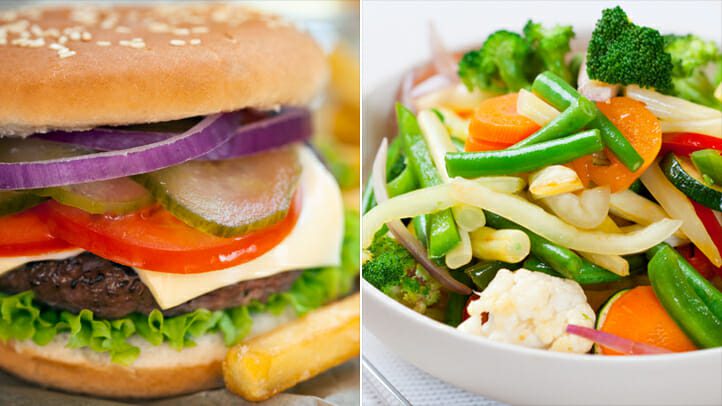
The IIFYM approach is really focusing heavily on the numbers. The overall motto is everything is acceptable (in moderation) provided it works into your daily calorie and macronutrient count.
Because weight loss is very much all about the numbers, you simply can’t find an approach that will guarantee fat loss results as well as the IIFYM approach.
And, rather than giving you ratio estimates on the breakdown of carbs, proteins, and fats like the paleo diet does, IIFYM will give you strict guidelines.
They are clearly defined by one of our coaches within each Customized Macro Blueprint.
They are:
- Protein – 0.8-1.1.5 grams per pound of lean muscle mass
- Carbs – Whatever calories are left over, will then be used for carbohydrates
- Fat – 0.3-0.4 grams per pound of lean muscle mass
This specific approach will help you ensure you are feeding your body exactly what it needs to see success. It takes a much more exact method to everything so you leave far less room for error.
Additionally, the IIFYM will typically allow for a greater portion of healthy carbohydrates to be added to your protocol, which will then support all those intense workouts that you plan to do.
Now, the only one problem, however, is that if you just focus on your macros with no regard to the food choices you are making, you can miss out on all the micronutrients you need to be eating (vitamins and minerals).
Think of the IIFYM approach as the best compliment to ensure that the paleo diet plan gives you the weight loss (or body composition) changes you want.
This is where the paleo diet really shines. Because this diet is so focused on eating wholesome high-quality foods, you’re going to get that high intake of the micronutrients already.
By using the IIFYM approach, you will now be ensuring that you are eating the right calorie level of these foods in the right macronutrient ratios, giving you the golden ticket to optimal health and a killer physique.
Basically, think of it as a Paleo diet plus healthy carbs using the IIFYM calculator approach. This gives you a win-win scenario.
Together, these two fit perfectly together. What’s more is that if you do choose to be paleo part-time, so to speak, allowing yourself a little more flexibility in your diet plan and eating foods occasionally that aren’t on the paleo list (such as beans, oatmeal, and so forth), by utilizing the IIFYM approach, you can add these foods to the menu seamlessly.
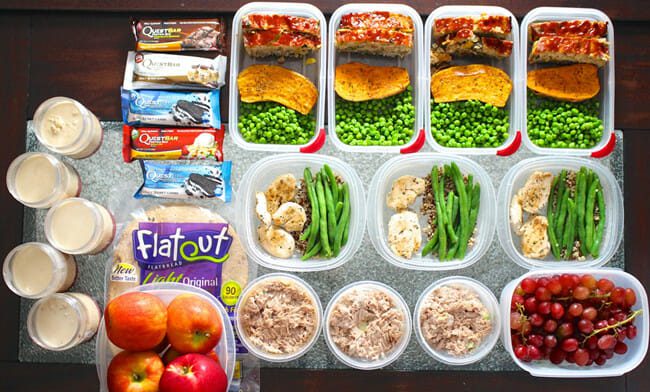
A Possible Winning Combo
You’ll still be ensuring that you are maintaining the right calorie level for optimal fat burning and while, depending on what the food is, you may not quite get the health benefits you’d get from eating a paleo diet plan, you will still see excellent results overall.
Think of the IIFYM approach as the best compliment to ensure that the paleo diet plan gives you the weight loss (or body composition) changes you want.
Without adding the IIFYM approach in, you may improve your health and you might lose fat, but it’s not guaranteed.
Those who don’t have a strong background in nutritional information may not know how to properly structure their meal plans so they are getting enough protein, healthy fats, and the right amounts of carbohydrates to meet their energy requirements.
The IIFYM will make it easy as you’ll simply be tracking your macros in an application or program so that as you pick and choose your paleo diet foods, they add right up to what you need them to be.
So who should use this hybrid plan? Who is this well suited for?
Who Should Use The IIFYM-Paleo Approach?
In a sense, just about everyone can benefit from this style of eating :
- Those looking to lose weight will see excellent results as they can now eat the right foods for health while controlling their body weight
- Those who want to prevent disease can benefit thanks to the numerous health-boosting foods included in this plan
- People who are highly athletic in nature will do well as they can ensure they are giving their body the carbohydrates it needs to exercise optimally
- Those who want to build muscle will also benefit from this plan can just as easily be made high calorie to help with the generation of this lean muscle mass
As you can see, this plan has something for everyone. The only group of individuals who may struggle is vegetarians. As the plan is based very heavily on meat sources of protein and forbids the inclusion of beans, legumes, and soy-based foods, getting adequate protein on the paleo diet as a vegetarian would be incredibly challenging.
As such, this group of people would need to make even further modifications to the primal style of eating.
Apart from that, however, everyone else should see great results from using this plan. Whether you choose to use it full-time or part-time, it is one giant step away from the everyday diet most people eat in our society, which is filled with processed, nutrient devoid foods.
Conclusion
The paleo diet is great on its own.
But, if you want to make it even better, incorporate the principles of IIFYM. It is the single best way to ensure that you realize the body composition and exercise performance goals you have.

